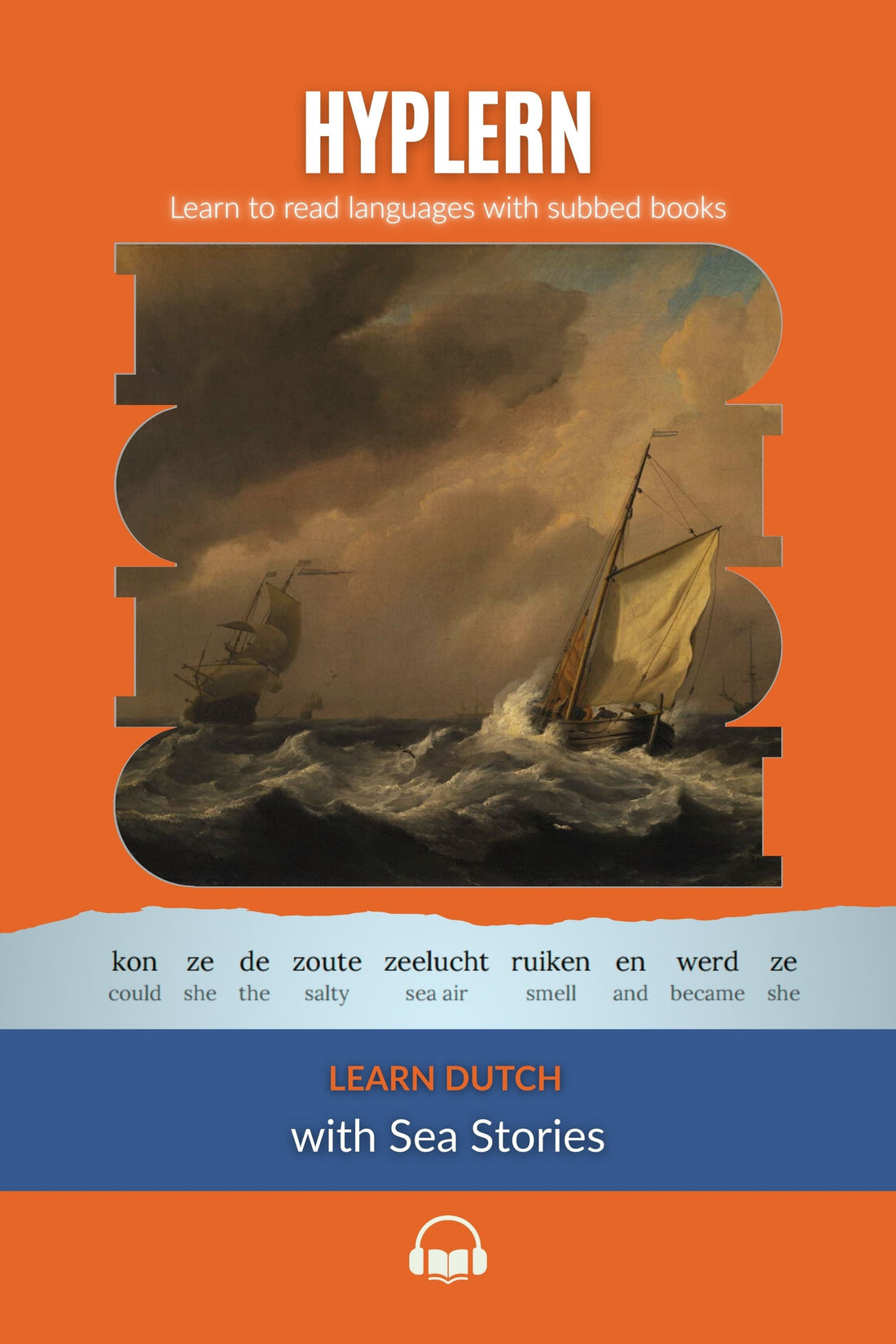
Master Dutch Naturally with Interlinear Books: The Smarter Way to Learn
Share
The Power of Reading with Interlinear, Subbed, or Subtitled Books
For language learners tired of rote memorization and grammar drills, there’s a better way to learn Dutch. Interlinear books — sometimes called “subbed books” or “subtitled books” in educational circles — offer an elegant method: learn directly from native texts while seeing the translation under each word.
Instead of flipping through a dictionary or guessing sentence structures, interlinear reading delivers real comprehension, organically. You get context, structure, vocabulary, and culture — all in one go.
Why Dutch is Perfect for Interlinear Learning
Dutch is a beautiful and expressive language, but it can be tricky for learners due to its compound words, flexible sentence structure, and modal verbs. Traditional study methods often fall short when it comes to mastering how the Dutch language actually flows.
Interlinear Dutch books help you bypass this hurdle. With a literal English translation placed beneath each Dutch word or phrase, you’ll pick up not only the vocabulary but also the sentence mechanics that Dutch learners usually struggle with.
Let’s take an example from De Zeemeermin van Edam (The Mermaid of Edam) from our Sea Stories collection:
Dutch original
De Zeemeermin van Edam
Nog voor de tijd dat hertog Albrecht van Beieren over Holland regeerde…Interlinear (word-for-word)
The sea-mermaid of Edam
Still before the time that duke Albrecht of Bavaria over Holland ruled…
This structure helps you see, immediately, how Dutch often reverses English sentence order (regeerde over Holland → ruled over Holland) and how noun compounds (like zeemeermin = sea-mermaid) are constructed.
Another passage illustrates even more nuance:
Dutch original
Zij haatte de mensen. Zij hield alleen van het spel tussen golven en zonneglans.Interlinear translation
She hated the people. She held only of (loved only) the game between waves and sun-glitter.
These direct translations may sound awkward in English — but that’s the point. You learn to think in Dutch by seeing how Dutch speakers structure thought.
Subbed Books for Self-Learners and Language Enthusiasts
Whether you’re studying independently, supplementing classroom lessons, or returning to the language after a break, subbed books and subtitled texts like these support:
- Natural vocabulary acquisition: Words repeat in meaningful contexts, helping you retain them.
- Grammar through exposure: See case, tense, and word order in action instead of as abstract rules.
- Immediate comprehension: Understand entire paragraphs with the help of line-by-line guidance.
- Cultural immersion: Read authentic Dutch stories like “Het Dodenschip” and “De Vliegende Hollander.”
The HypLern Difference
At HypLern, our interlinear Dutch books are:
- Unabridged: You get the full story, not simplified “graded readers.”
- Line-by-line: Every word is translated beneath its Dutch counterpart.
- Authentic: You learn with real stories and folktales, not textbook dialogues.
- Flexible: Read at your own pace, skim translations less over time, and revisit any chapter anytime.
How to Use an Interlinear Dutch Book
We recommend three phases:
-
Discovery – Read both lines together. Get a feel for the sentence and vocabulary.
-
Immersion – Cover the English translation and read as much Dutch as you can.
-
Fluency – Re-read without the interlinear help to see what you’ve retained.
It’s like training wheels for reading fluency — and eventually, you ride solo.
Final Thought: Dive Into Dutch with Stories, Not Flashcards
Language isn’t just rules. It’s rhythm, style, and story. Interlinear books, subbed line-by-line and crafted for real learners, bring you into that world — one sentence at a time.
If you’re looking for the best way to learn Dutch through reading, check out HypLern’s Sea Stories and start reading Dutch the way it was meant to be experienced: in full, with support, and without fear.
